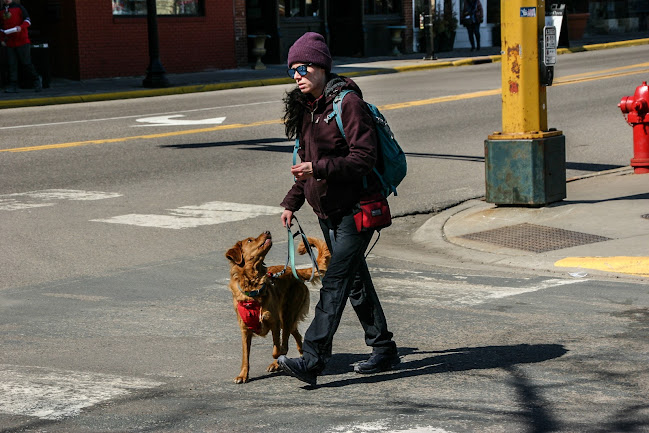The Canon Digital Rebel wasn't the first DSLR camera (I don't own it and I could not afford to own one of the very first DSLRs) nor was it even Canon's first dedicated DSLR camera. But it was the first DSLR to bring Digital Photography into the hands of the Hobbyist and casual photographer.
In 2003 the first Canon Rebel known just as the "Digital Rebel" in US markets or the 300D in Europe/ Digital KISS in Japan was one of the first mass produced cameras that was easy to use for anyone, which made it revolutionary. Older DSLRs such as the Fujifilm S1 and S2 pro, Nikon D1, and Canon 1D were both very expensive and had an excess number of analog buttons for camera operation that would be difficult for a beginner to photography to use.
The Digital Rebel changed all of this. It featured the same 6mp CMOS 1.6X APS-C crop sensor that the Canon D60 and Canon 10D used. It added a small number of automatic scene modes and reduced the control dials to one, a feature that would become a staple of future Rebel/KISS/XXXD/XXXXD cameras to come.
So how does a 20 year old DSLR camera hold up to this day? Surprisingly really well especially since this was the first more advanced Interchangeable Lens Camera I've reviewed. Prior to this my challenge has been nothing but pocket cameras and superzooms due to the fact they are easier to conceal and take random photos inside a store or mall when the weather is less then ideal in the winter of the Midwest.
Now that Spring is finally here I can start reviewing some of my more advanced and less discreet cameras. There are certainly a lot of ways a modern point and shoot still shines over old DSLRs like the original Digital Rebel, namely in the fact that they can't shoot video or even use live view. They were dedicated on taking photos Only where pocket cameras could capture video and offer a live preview from the start.
The Digital Rebel is a good example of why "Megapixels don't equal quality". For still photo quality its much better then the 20mp SX720 and Elph 190 pocket cameras I've reviewed earlier and it decimates the 12mp SX280. And if I compared it to my "48 megapixel phone" it wouldn't even be close. The 6mp Rebel just looks so much better.
There are two factors that make a 20 year old DSLR produce higher quality images then a pocket camera that's half its age. The biggest factor is Optics. Even a cheap "Kit" or Superzoom DSLR lens (in this case most my photos were taken with a Tamron 18-270 super zoom lens) provides a lot more light to the sensor and has far higher quality lens elements then what is found in a pocket camera, phone or even most bridge cameras.
The second factor is sensor size. Many photographers hyper-fixate on this one and its the primary reason a lot of people will "Only Shoot Full-Frame for Professional Quality Photos" when this is often an extreme view. Anything larger then Micro 43rds (which is a 2x crop from a full frame sensor) is going to produce crisp, clean and highly detailed images. While many people don't consider an APS-C sensor as a "large sensor" it actually is quite huge especially when you consider the sensor on a smartphone is smaller then the eraser on a pencil.
The Digital Rebel is not without its faults. It has a 2-3 second warm up from turning the camera on to when it can actually shoot. This includes if the camera goes to sleep. The EOS logo flashes while the camera boots up. This means you can easily miss shots if you aren't constantly shooting it.
Additionally it has a very limited buffer. Shooting in RAW creates a 3-5 second write delay between shots even in single shot mode. This goes upwards to around 10 seconds if the camera is writing more then one photo from buffer to the CF card.
Shooting in burst mode is also limited to a handful of shots even in JPEG mode before the camera will need to write the buffer to the card. For this reason, I shot the camera in JPEG mode instead of RAW (which I will likely do with some of the bridge cameras I own for similar delay reasons).
One of the biggest limitations is low-light. The Digital Rebel goes up to ISO 1600 and handles low light situations only marginally better then small sensor pocket cameras for ISO noise. (That said the noise looks more organic and less granular then you'd see on small sensors- making it less distracting)
Most of the photos I took during the review week were outdoors and turned out really good as I didn't have to shoot any higher then ISO 400. But here is an example of a photo taken at ISO 1600 under non ideal lighting. It's not terrible for web posting but you can certainly see the noise and loss of color information:
Overall the Canon Digital Rebel was a lot of fun to use. It was also a good reminder of how even old digital cameras can take some great photos if you are patient enough. This wouldn't be a camera I'd rely on at a major event or any serious photography such as shooting as a Staff photographer for an event; however as a casual camera for street photography it did a really good job given its age.

































